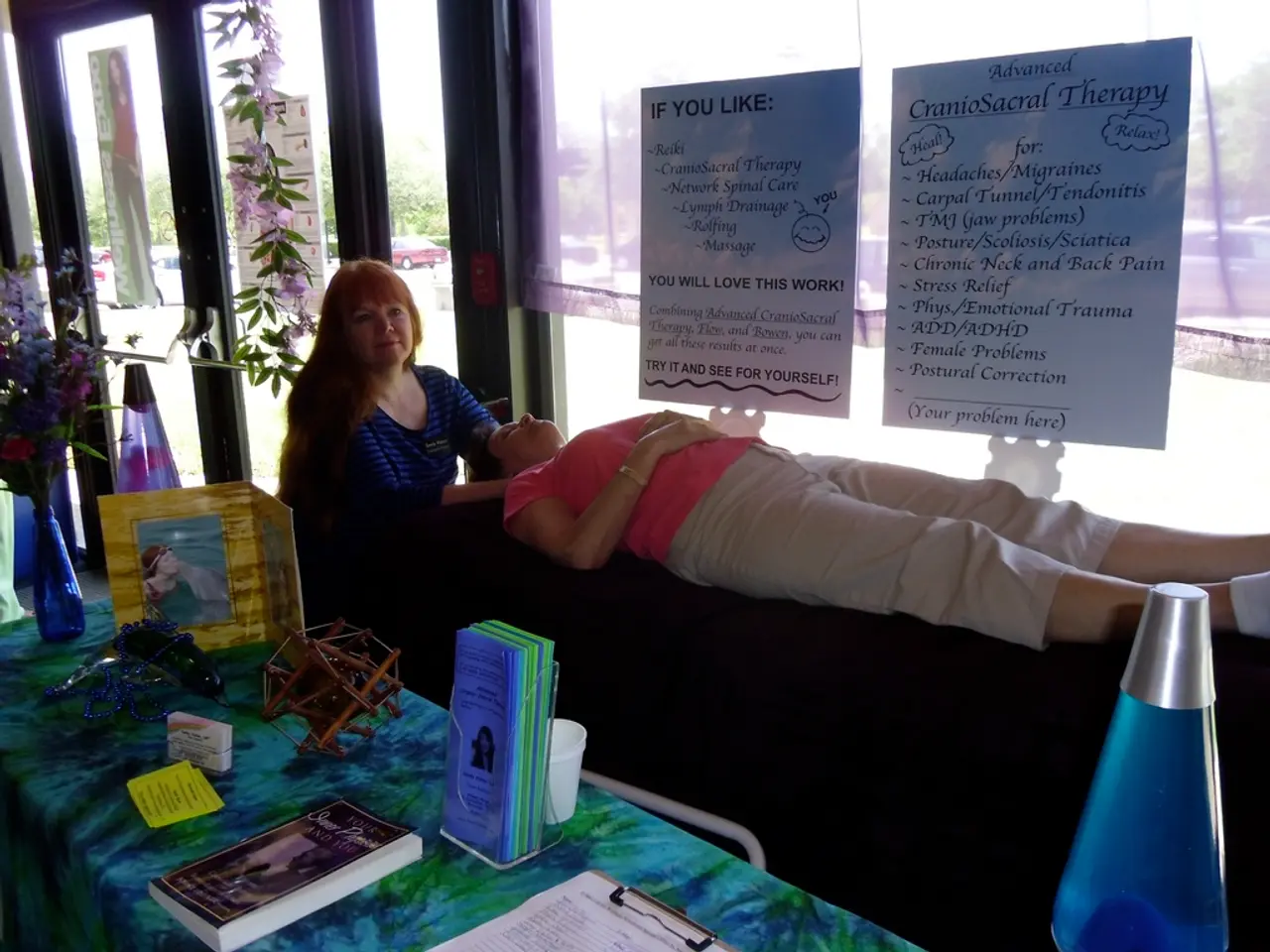The Unseen Connection: How Depression Frequently Leads to Physical Ailments and Discomfort
Depression, a mental health condition affecting millions worldwide, can have profound physical effects on the body. One of the most common physical manifestations associated with depression is back pain. This article delves into the key ways depression influences back pain and explores potential strategies for managing both conditions.
Physical therapy can be beneficial for specific pain issues, particularly back pain. However, depression can exacerbate this pain through a combination of psychological amplification of pain, emotional distress leading to maladaptive coping, increased muscle tension, impaired sleep, and neurochemical dysregulation.
The psychological amplification of pain is linked to heightened pain intensity. Negative emotional states, such as perceived injustice or helplessness, can increase pain vigilance and reduce tolerance, making back pain feel more intense. Cognitive Behavioral Therapy (CBT) can help manage both depression and chronic pain by addressing these emotional factors and teaching adaptive coping strategies.
Emotional and cognitive factors play a significant role in the relationship between depression and back pain. Depression fosters feelings of loss, sadness, and helplessness due to the limitations imposed by chronic pain, leading to a depressive "what was" mindset. This emotional burden can create a feedback loop that intensifies the perception of pain and disability.
Stress and muscle tension are also key factors in this relationship. Depression and related stress can cause muscle tension, particularly in the back, leading to stiffness, spasm, and pain. Mindfulness and relaxation techniques, such as yoga and meditation, can help reduce stress and muscle tension.
Sleep disturbances are another factor that aggravates pain perception and impairs rehabilitation efforts. Improved sleep habits can help with both depression and pain management. Regular exercise can also improve mood, reduce pain, and increase overall well-being.
The role of neurotransmitters, such as serotonin and norepinephrine, is crucial in understanding the connection between depression and physical pain. Antidepressants that affect both serotonin and norepinephrine levels can help with both mood and pain symptoms.
The link between depression and physical pain is rooted in the intricate workings of the nervous system. Depression-related physical pain is a growing recognition in the field, with common types of physical pain associated with depression including headaches, back pain, joint pain, muscle aches, and chest pain. Some individuals with depression experience chest pain or discomfort, often related to anxiety or stress.
In summary, addressing both the psychological and physical aspects is critical in managing chronic back pain with comorbid depression. A healthy diet can support both mental and physical health, and a well-rounded treatment plan may include physical therapy, CBT, mindfulness practices, regular exercise, improved sleep habits, and potentially antidepressant medication. The mind-body connection in mental health is a fascinating area of study, and continued research will undoubtedly provide further insights into this intertwined relationship.
References: [1] Fields, H. L. (2018). The Neurobiology of Chronic Pain: Molecular, Cellular, and Systems Aspects. Academic Press. [2] Krahn, D. A., & MacFarlane, G. J. (2018). Sleep and Pain: A Two-Way Street. Sleep Medicine Clinics, 13(3), 275–289. [3] Keefe, F. J., & Pivik, R. G. (2014). Psychological Factors in Pain. In Handbook of Pain Management (pp. 33–48). Springer, New York, NY. [4] Moseley, G. L. (2012). Explain Pain. Noigroup Publications. [5] Schachter, S. (2013). The Oxford Handbook of Psychopharmacology in Clinical Practice. Oxford University Press.
- The psychological amplification of pain, a factor linked to depression, can increase pain vigilance and reduce tolerance, making back pain feel more intense.
- Cognitive Behavioral Therapy (CBT) can help manage both depression and chronic pain by addressing emotional factors and teaching adaptive coping strategies.
- Depression fosters feelings of loss, sadness, and helplessness due to the limitations imposed by chronic pain, leading to a depressive "what was" mindset, which in turn intensifies the perception of pain and disability.
- Improved sleep habits can help with both depression and pain management as sleep disturbances are another factor that aggravates pain perception and impairs rehabilitation efforts.




